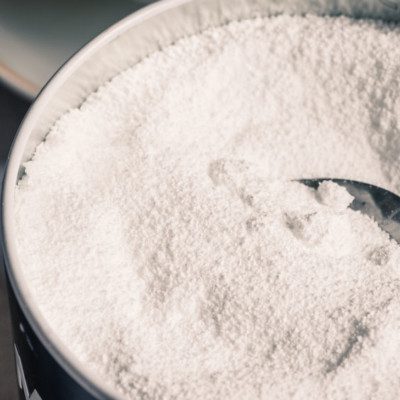Origin
Some polyols are present in nature, particularly in the vegetable kingdom but as their extraction and biotechnological production are financially impractical due to process complexity, they are manufactured industrially by catalytic hydrogenation or reduction of mono-, di- and poly-saccharides.1
How does it work?
Polyols are derived from sugars by hydrogenation, i.e reducing the carbonyl group in a sugar molecule to an alcohol or hydroxyl group. This substitution of an aldehyde or ketone by an alcohol group transforms the sugar’s cyclical form into a linear form.1
They are used as sweeteners alone or in combination with sugars. In high speed bakeries, they are used at relatively lower levels than traditional carbohydrates such as sucrose, glucose syrups, high fructose corn syrup and molasses.
Nutrition
Unlike sugars, polyols are incompletely digested by the body. In addition to their low caloric value, polyols have low glycemic index, and may help reduce the risk of some lifestyle related diseases.
Application
Most polyols are sold as crystalline white powders, either monohydrate or anhydrous. They are used in bread formulations as well as in frostings and fillings. They blend quite well with regular sugars and flavors.
Using polyols in bakery products has both pros and cons. The baker must balance these aspects based on the finished product characteristics and sales potential. Challenges with using polyols may require formulation and processing adjustments due to polyols’:
- High affinity for water (i.e. greater water competition with flour hydration during mixing)
- Low capacity to crystallize (key for cookie making during product cooling)
- Absence of Maillard reaction as reducing group has been converted to nonreducing group (poor crust color in baked goods is common unless formulation adjustments are done). However, this property can be used effectively in products that don’t require browning such as cookies, marshmallows, etc.
- Inability to be fermented by yeast. Therefore, nutritive sugars must be present to provide optimum fermentation performance, proper product flavor, aroma and volume.
- Viscosity lowering effect in cake batters. If not properly formulated along with sucrose, issues related to bench tolerance (gas stability) may occur.
- High usage levels can result in a laxative effect which may be a limiting factor when formulating with polyols.
Advantages of using polyols
- Sweetness is somewhat comparable with traditional sweeteners such as sucrose, glucose and lactose.
- Low caloric content compared to nutritive sweeteners (4 Cal/g), an important benefit to bakers while making reduced-calorie bread, cakes and other sweet goods.
- Can be used as bulking and filling agent (i.e. to increase product weight and volume without affecting sensory features).3
- Lower water activity of products due to high water binding capacity resulting in baked products with longer shelf-life. Sorbitol solids, for e.g., are twice as effective as sucrose at lowering product water activity, thus their role in extending cakes shelf-life at room temperatures.2
- Non-cariogenic (do not contribute to dental caries). This feature may be a key buying factor in some markets.1
- Increase freeze/thawing stability due to water binding. This helps retain texture and flavor in frozen dough applications.3
The following table summarizes the sweetness and caloric content of some polyols:1,2
| Polyol | Relative sweetness (sucrose is 100%) | Calories per gram |
| Xylitol | 100 | 2.4 |
| Maltitol | 90 | 2.1 |
| Sorbitol | 50–70 | 2.6 |
| Mannitol | 50–70 | 1.6 |
| Lactitol | 30–40 | 2.0 |
| Hydrogenated starch hydrolysates | 25–75* | 3.0 |
* Depends on degree of depolymerization
FDA regulation
Polyols are legally approved in the U.S. as food additives and can be directly added to products for human consumption.
According to 21 CFR Part 184 (Direct Food Substances Affirmed as Generally Recognized as Safe) and Part 182 (Substances Generally Recognized as Safe), all polyols from mono-, di- and poly-saccharides are considered GRAS. Listing polyols in the Nutrition fact panel is voluntary unless a functional claim is being made.
References
- Billaux, M.S., Flourie, B., Jacquemin C., and Messing, B. “Sugar Alcohols.” Handbook of Sweeteners, Springer Science+Business Media, LLC., 1991, pp. 72–100.
- Cauvain, S.P. “What?.” Baking Problems Solved, 2nd edition, Woodhead Publishing, Elsevier Ltd., 2017, pp. 494–495.
- Mariotti, M., and Lucisano, M. “Sugar and Sweeteners.” Bakery Products Science and Technology, 2nd edition, John Wiley & Sons, Ltd, 2014, pp. 211–220.

